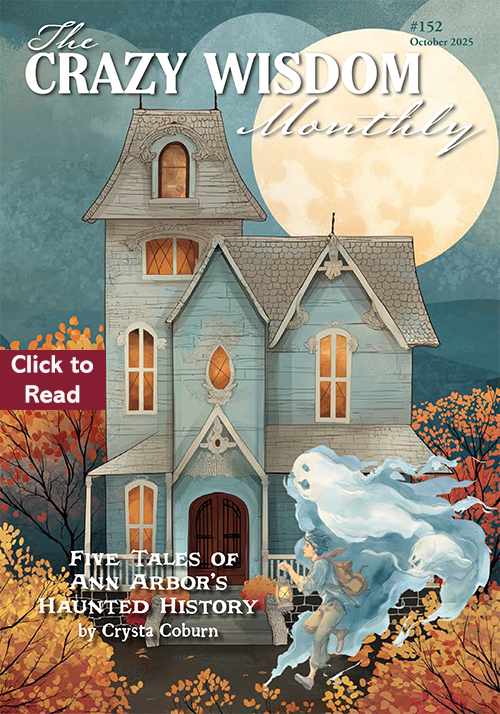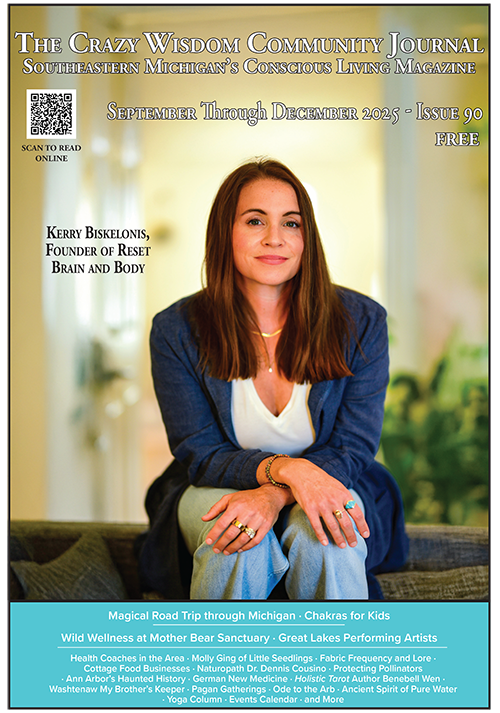By Brooke Curie
I’d like to invite you as a guest to my house. Walking in, you might admire the variety of beautiful art that fills the walls. You’d see light-filled flowing water colors, intricate tile mosaics, gorgeous reproductions of Van Gogh and Degas, bold self-portraits in black and white acrylic, vibrant silk paintings, and more. I’d feel proud when I told you that this art was created by my children. You might think I have a very talented family, and that may be true. But the deeper explanation is that I have five children who attend, or have graduated from, Rudolf Steiner School of Ann Arbor, a Waldorf school.
My journey with Waldorf education began 14 years ago, when my oldest was starting kindergarten. One of the first things that attracted me to Rudolf Steiner School was the opportunity for my children to have balance in their school day. A variety of artistic activities are interwoven with rigorous academic endeavors to achieve this harmony. Bursting with joy and vitality, my children would not sit all day getting filled with information, staring at worksheets, textbooks, and various screens. There would always be a thoughtful rhythm to their day. From early childhood through high school, Waldorf students experience many kinds of fine and practical arts: drawing, painting, sculpting, singing, folk dancing, handwork, woodwork (you should see the container of hand-carved wooden spoons in my kitchen!), instrumental music, and the list goes on… Weaving artistic practices with intellectual ones creates a healthy flow in the school day – an inbreath and outbreath. Imagine an 8th grade class: focusing intently during a chemistry lesson (inbreath), next they draw the experiment they just observed in their main lesson books (outbreath), later they have woodworking class where they’ll work on the three-legged stool they’re making this year – it started as a rough tree trunk (outbreath), next is math class (inbreath), you get the idea. The arrangement of the school day is healthy and harmonious, allowing students to restore their energy, renew their focus, and take in information in a deeper way.
I was so inspired by this way of educating children I eventually got my MEd from Sunbridge College, where many teachers learn how to practice the art of Waldorf education. Throughout these years, I’ve been able to delve deeply into the complexities of arts integration in education, and I’m always amazed at how layers continue to unfold for me. On a surface level I have some pretty amazing art on my walls. Yet these layers range from the superficial, to the profoundly deep, illuminating the wise way Waldorf schools integrate arts across the curriculum.
Everything in the Waldorf curriculum is selected with utmost care, based on Rudolf Steiner’s insight into human development. In the early childhood program, children paint with liquid watercolors on wet paper- the colors flow and blend as though alive, providing a sensory experience that is just right for this dreamy stage. As students get older, they become able to bend these fluid watercolors to their will and create intentional forms in their paintings, not an easy feat. In 6th grade, students do black and white drawings to address their ‘all or nothing’ way of seeing the world. In 7th grade, perspective drawing is introduced, because students are beginning to look at issues from many sides. The curriculum is full of examples of activities designed to meet developing students in significant ways.
Rudolf Steiner students experience various modes of artistic expression, while their teachers bring everything to them in an artistic way. Waldorf teachers take in the information for their lessons, make it their own, and present it creatively – through story, songs, poetry, drama, demonstrations. These teachers strive to perform an art of education, embodying their subject matter and giving dynamic lectures from the heart. Students come away from lessons like these with a richness and depth of living knowledge.
The most exciting aspect of arts integration involves cultivating a truly human intelligence. What does this mean? I think a good way to think about this idea is through questions. Since artificial intelligence is on the rise in a seemingly exponential way these days, what is the value of one-sidedly fostering the kind of thinking that machines will always surpass us at? Imagine a future full of people who are great at thinking like machines. On the other hand, what is the value for the future, of humans who can think in an artistic way? What is the creative process, that state of mind that is cultivated when practicing art? Albert Einstein said, “Imagination is more important than knowledge”. There is a realm we can access for inspiration – brand new ideas, healthy ways of working in the world. Wonderful things come from this place – new inventions, breakthroughs, ways of communicating. How can humans gain more access to this world? One way is through a consistent training in the arts.
Investing in a Waldorf education will do so much more than fill your walls with beautiful artwork. Integrating arts with academics trains people to think in multi-dimensional ways, adds warmth, and cultivates humanity. Is this becoming more important as our world becomes increasingly mechanized? At its pinnacle, the goal of integrating arts in education is to develop humans who can access inspired wisdom and bring it into the world through acts that are good, beautiful, and true.



































































































































































































The subtle energy system has always been integral to humanity’s weave of existence. Though the media tends to focus on seven major chakras in the Hindu/yogic tradition, there is commonality across Cherokee, Incan, Pueblo, Tibetan Buddhist, and Sufi Muslim mysticism beliefs to name just a few. That being understood, there are major and minor chakras throughout the body—at every joint, nerve bundle, palms of the hands, souls of the feet, nipples, and more.